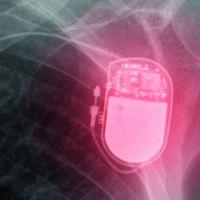EE4555 Active implantable biomedical microsystems
Active Implantable Biomedical Microsystems (AIBM) in the human body are now becoming more widely acceptable and available since the development of cardiac pacemakers. Today, miniaturized wireless implantable systems are changing the face of biomedical research and clinical practices through the development of cochlear implants, neuroprostheses, brain–computer interfaces, deep organ pressure sensors, precise drug delivery units, bioelectronic medicine and electroceuticals. With a greater life expectancy and an increasing demand for medical healthcare to guarantee a sufficient health-related quality of life, there is a greater demand on technology and electrical and biomedical engineers to develop active implantable systems for a wide variety of medical diagnostics, treatments and therapies.
This course provides a background on the application of AIBMs, an introduction to the latest techniques used and examples of existing medical devices. It can be used as a guide to the design of AIBMs and also as a reference for existing medical devices. The course is aimed at MSc students in Electrical Engineering (track Microelectronics) and in Biomedical Engineering (specialization Biomedical Electronics) who have an interest in the research and design of AIBMs.
The following topics are treated:
- Electrophysiology
- Electrodes, optodes, sensors and actuators
- Electrode characterization and modeling
- Electronic system design
- Stimulation electronics
- Front-end electronics (signal conditioning, amplifiers, filters, ADCs, etc.)
- DACs and wireless data transfer
- Energy harvesting and power delivery
- Applications: cochlear implants and cardiac pacemakers
- Digital design
- Biocompatibility, materials and fabrication considerations
- Assembly, system integration and packaging
- Application: spinal cord stimulator
- Reliability and security
- Clinical and regulatory considerations
Teachers
prof.dr.ir. Wouter Serdijn
Circuits and systems for wearable, implantable and injectable medical devices, in particular electroceuticals and bioelectronic medicine.
dr. Vasiliki Giagka
Design and fabrication of active implantable devices; Analog and mixed-signal integrated circuits for biomedical applications
dr. Dante Muratore
Analog and mixed-signal CMOS circuit design for biomedical applications and sensor interfaces; circuit-algorithm co-design; neurophysiology.
dr.ir. Christos Strydis
High-performance computational-neuroscience applications, dependable computer architectures, low-power embedded systems and biomedical microelectronic implants
Last modified: 2025-08-10

Details
| Credits: | 5 EC |
|---|---|
| Period: | 0/0/0/4 |
| Contact: | Wouter Serdijn |